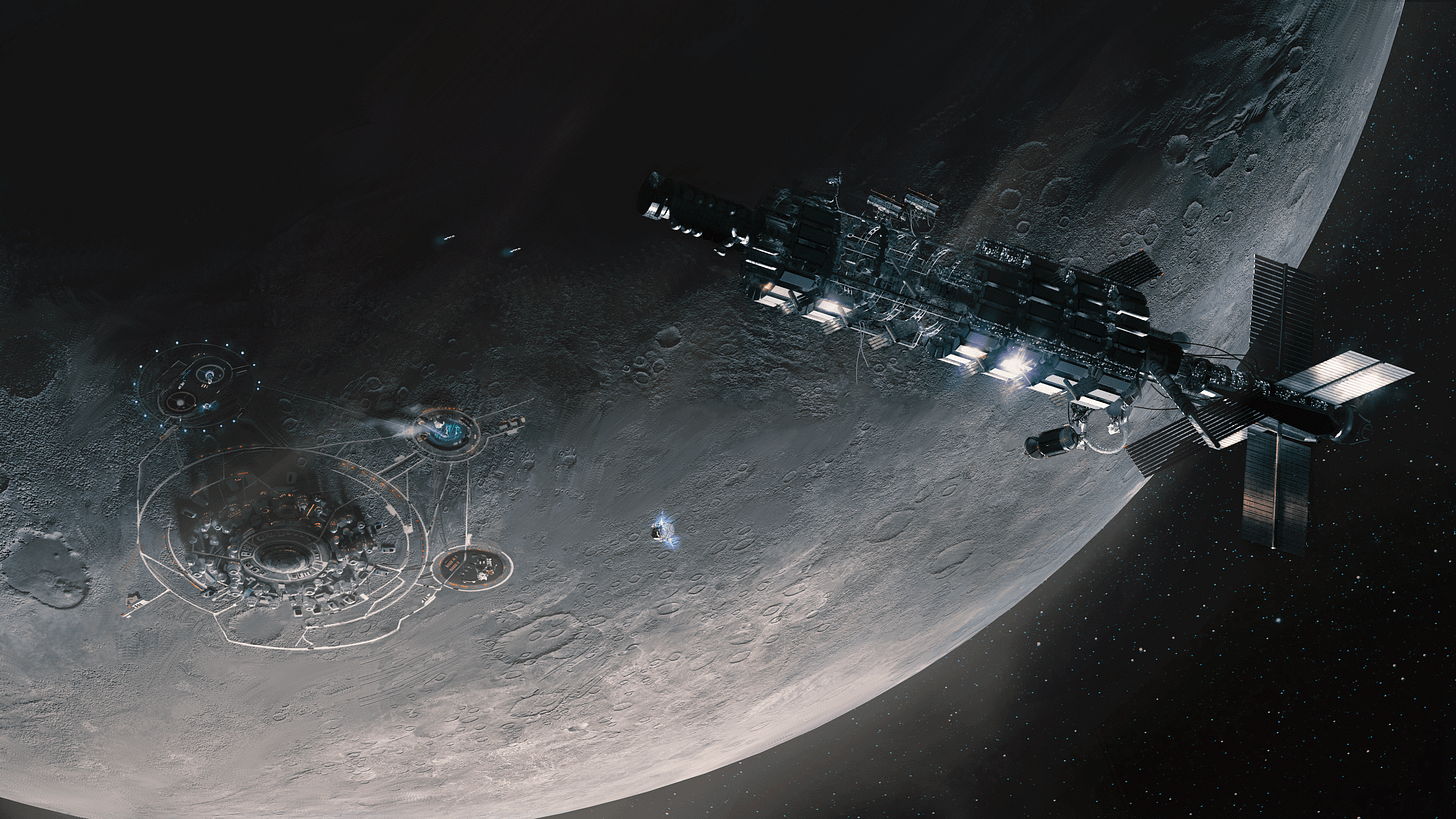Origins
In 2246, a pioneering group of several thousand set off from Earth, on a generational ship, bound for a system 14 light-years away with an identified, habitable planet waiting for them. A dying Earth, and the only slightly more palatable prospect of a difficult life on an overcrowded Mars, had left their journey as one of the only remaining options.
On the way out of the Solar System, while passing through the extreme outer reaches of the Oort Cloud, and in a stroke of terrible luck, their ship passed within 100,000 kilometers of a previously unidentified dark and icy exoplanet. The significant gravitational perturbation pushed them well off-course, and with limited excess fuel to re-adjust, eliminated their prospects of reaching their initial destination.
Leadership convened an emergency meeting, and they decided to target a new system within their reduced range. It had five planets, and although there was no certainty any of them were habitable, it was their only chance to avoid effectively drifting until their reactors gave out.
Arrival
Nearly 150 years later, the pioneers’ grandchildren completed their long deceleration burn and arrived in their system of refuge, Adalia. However, initial jubilation rapidly tempered. Each probe returned from surveying the planets, named Aion, Bia, Chronos, Dysis, and Eos, reporting hostile, uninhabitable environments.
They turned towards the asteroid belt between Bia and Chronos as a last resort. After a quick scan, there appeared to be roughly a quarter-million asteroids over 1km in diameter. The pioneers placed themselves in orbit around a giant asteroid, TG-29980, and decided to allow the pioneers to purchase mineral rights to the individual asteroids.
Additionally, to encourage rapid development and exploitation, all scan probes on-board were made available to the new prospectors.
Exploitation
With a better understanding of the resource abundance across the belt, the prospectors moved out to begin extraction. They established mines and extracted metals, volatiles, and organic materials from the ground, and burgeoning supply chains started.
Before long, certain asteroids were developing into specialized manufacturing centers. Factories receiving regular shipments from across the system covered the entire surface of some asteroids.
Market hubs also sprung up along major trade routes facilitating a stabilization in the economy and making more than one fortune.
Discovery
Earth was 150 years behind them, but technological progress had halted during the journey with no impetus for advancement within their self-contained vessel.
With the pioneers’ future now increasingly secure, they looked towards a higher quality of life as settlements began maturing. Increased automation allowed for more and more time to be set aside to pursue higher learning, and with it, the potential for scientific and technological breakthroughs.
New ship designs, novel propulsion methods taking advantage of the asteroid’s near zero-G environments, and more efficient processing and manufacturing methods became their primary focus. They would establish Adalia as a home and not just a refuge.
Conflict
With economic prosperity and a population expanding to reach every corner of Adalia, it was inevitable that conflict would arise.
Stratification between Alliances, asteroid-owning elites, and the masses surviving on Adalia Prime created tensions from the very bedrock of society to the top of the socioeconomic ladder. Pirates began striking out against trade ships from bases on asteroids many had forgotten about or stopped considering, forcing Alliances and wealthier merchant groups to build ships of war to support their ships of commerce. Traversing the system meant risking more than just mechanical failure; a pilot might also attract the attention of malicious actors.
The Adalia system, once dark and unpopulated, full of infinite possibility, was shrinking. Danger lurked in the darkness of space, and not everyone would survive.









